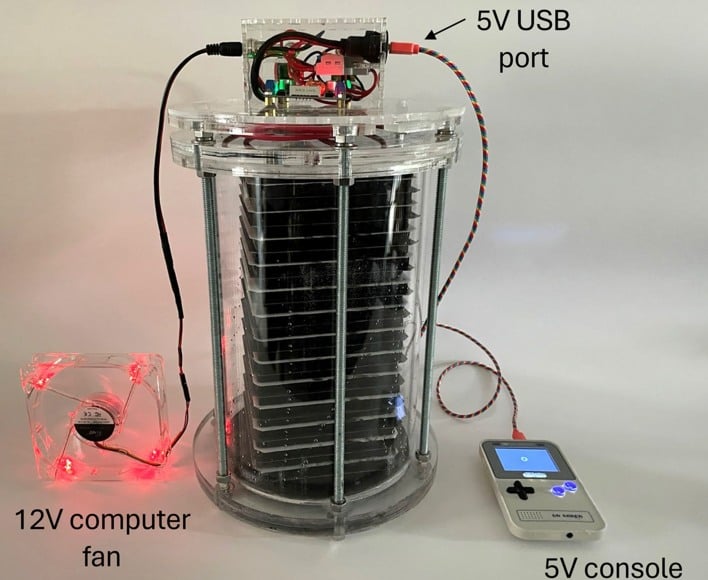MIT's Concrete Battery Tech Breakthrough Turns Buildings Into Giant Power Banks
Conductive concrete isn't brand-new; engineers have been adding carbon fibers or steel shavings to help roads de-ice or block electromagnetic interference for years. The twist with ec³ is that it behaves like a supercapacitor: its porous carbon network can actually hold and release charge. Early tests, including some small-scale projects in Japan, proved the concept could work in real-world settings, even if storage capacity was limited.
The recent leap came from imaging the concrete at the nanoscale and fine-tuning its chemistry. Researchers discovered a fractal-like carbon network that lets electrolytes penetrate deeply and store more energy. With a mix of organic solvents and simple quaternary ammonium salts, they cranked the energy density up, achieving a tenfold gain over previous versions of the tech.

Now, one cubic meter of ec³ can hold about two kilowatt-hours. That's enough to power a fridge for a day, according to the researchers. That sounds impressive until you compare it to lithium-ion batteries; a laptop battery can store nearly as much energy in a tiny fraction of the space. Of course, that's not a fair comparison, as ec³ is meant to supplement battery tech rather than replace it, adding distributed, long-duration storage across structures.
So this isn't about replacing your phone's battery; it's about embedding energy storage into the things we build. Unlike conventional batteries, ec³ doesn't wear out. It will last as long as the structure itself, and it can scale across entire buildings, bridges, or streets. Solar panels on a roof could feed power directly into the walls, and pavements could trickle-charge electric vehicles. Foundations could hold emergency energy, and the output from the concrete can be used to monitor structural health in real time.
It's still early, and commercial use is likely years away, but the idea is simple: why add batteries to buildings when the building itself can be the battery? This breakthrough has the potential to change not just change how we store energy—it could change how we design infrastructure altogether. In the near future, the walls around us might hold the charge for your smartphone.

